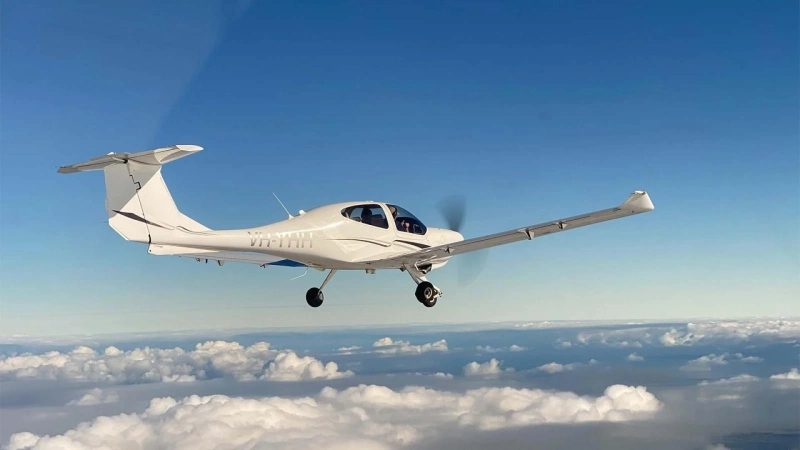Imagine soaring through the sky, navigating the vast expanse above while being responsible for the safety and well-being of goods and passengers.
This is the exciting and challenging world of a commercial pilot.
In Australia, obtaining a commercial pilot licence is a crucial step toward joining the ranks of these skilled professionals. With various aviation courses and commercial pilot courses available in the country, aspiring pilots have numerous opportunities to learn and grow in this rewarding field.
Let's take a closer look at the fundamental responsibilities of commercial pilots so that their contributions to secure airspace may be better appreciated.
Becoming a Commercial Pilot
Commercial pilots in Australia are required to complete extensive training and testing. The requirements for a commercial pilot license in Australia include classroom study, flight instruction, and actual flying time. As per the Civil Aviation Safety Authority's regulations, aspiring pilots must take and pass approved aviation courses.
Training in aviation courses offered in Australia are quite extensive and include a wide range of topics, including aviation regulations, aircraft systems, meteorology, navigation, and human aspects. Students who take these classes will be better prepared for success in their chosen fields. Aspiring pilots can learn the necessary skills through flight training that is put into practice under the supervision of professionals.
A typical commercial pilot course in Australia involves flight instruction, simulator training, and theoretical classes. As training continues, students amass the flying time and experience needed to apply for their licences. The training culminates in an extensive series of exams and flying tests designed to assess knowledge across the board. After finishing the course, you'll be eligible for a commercial pilot's licence and a rewarding job in the aviation industry.
Responsibilities of a Commercial Pilot
The primary duty of a commercial pilot is the safe transportation of passengers and goods between airports. This involves a multitude of tasks, such as:
1. Verifying Aircraft Functions
A commercial pilot is responsible for doing a thorough pre-flight inspection of the plane to verify that everything is in proper functioning condition. They ensure everything from the engines to the hydraulics to the electronics (including radars and navigation systems) is in good working order. They ensure the plane has enough fuel to get there and the load doesn't exceed its weight capacity. They also verify that the aircraft's technical logbook was kept up to date and that the maintenance schedule was adhered to.
2. Operating planes for passengers
Professional pilots take off from their departure airport and fly their planes to their destination. Throughout the flight, they keep an eye on the instruments in the cockpit and guide the plane in the most efficient course. After flying to their target, the pilots perform a precision landing.
Pilots for commercial airlines typically team up with a copilot when flying. Solo flights are the norm for pilots who operate smaller aircraft, such as those who work for tour groups. Pilots working for commercial airlines transport passengers from one city to another, whereas those for tourist businesses typically take them on a sightseeing flight that ends back where it began.
3. Constructing flight plans
A commercial pilot can design a safe route if they know their timetable and the current weather. This might be the shortest route if the weather holds. They could also plot a circuitous course to avoid potentially dangerous airspace and minimise turbulence.
4. Keeping an eye on the forecast
When planning a commercial trip, pilots always double-check the weather at the airports of departure and arrival, as well as any other stops along the route. The more they know about the weather and possible dangers like high winds, fog, and storms, the better they can adjust their flight plans. Potential delays can also be flagged, giving the pilot more information to consider while deciding on a flight route. The pilot has the authority to postpone or cancel the flight if the weather is unsafe. Until they have safely touched down at their destination, pilots will continue to monitor the weather and make course corrections as necessary.
5. Adjusting the flight management software
Flight management systems are installed in certain commercial aeroplanes and help pilots out by automating several mundane duties. The aircraft's sensors are constantly being monitored by the flight management system, which also plots the aircraft's course and locates the aircraft. Commercial pilots typically set up such aids before takeoff to ensure a smooth flight.
6. Interfacing with air traffic control
Commercial pilots must coordinate with ground controllers at different stages in their flights. Before pushing back and starting the engine, they request clearance from the tower. Throughout the flight, they maintain radio contact with air traffic control and coordinate a safe landing. Maintaining constant radio contact with ATC ensures that pilots may fly without interference from other planes.
Takeaway
Commercial pilots must possess a high degree of ability, knowledge, and professionalism to fulfil the many responsibilities that come with the job. Aspiring pilots in Australia may begin an exciting career in the sky by acquiring a commercial pilot licence and then doing the required aviation courses in Australia.
Having skilled, committed commercial pilots is crucial, especially as air travel becomes increasingly important for work and leisure.
Are you ready to take on the challenge and responsibility of becoming a commercial pilot?


